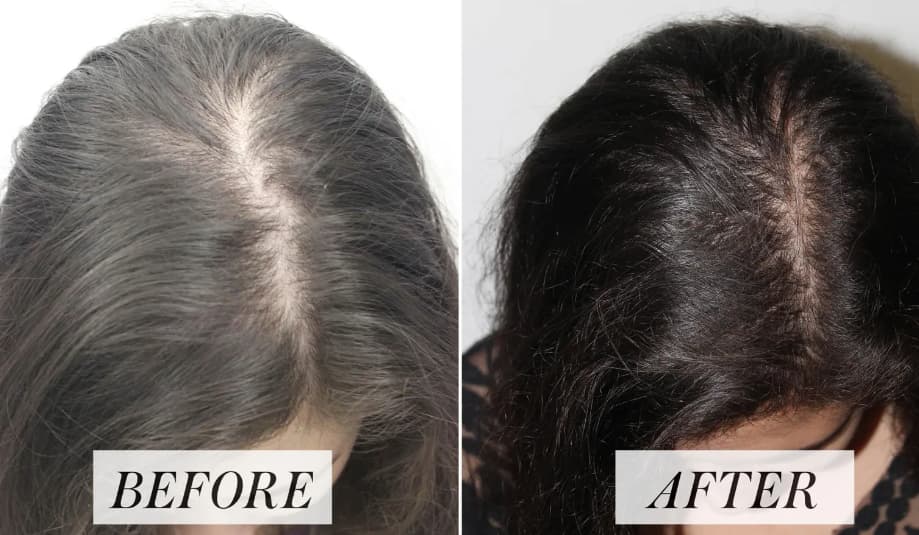Expert Advice
How Much Does PRP For Hair Loss Cost?
Have you heard of this therapy, if don’t read the complete article because this might help you to bring your precious hair back? Platelet rich plasma (PRP) therapy has recently gained popularity because of a nonsurgical treatment option available for hair loss in recent years and it’s safe.
The procedure is simple. It involves injecting a patient’s own platelet rich plasma into the scalp which promotes hair growth by stimulating the hair follicles.
How Much Does PRP For Hair Loss Cost?

This article will completely explore all factors that include all questions in your mind like the cost of PRP therapy for hair loss, what the treatment entails, and the results you can expect.
Overview of PRP Therapy for Hair Loss
PRP therapy involves the use of a patient’s own blood to stimulate hair growth. The understanding procedure is quite simple. A small blood sample is taken to analyze and placed in a centrifuge, which separates the plasma from the other blood components.
The plasma, rich in growth factors and platelets, is then injected into the patient’s scalp at the site of hair loss.
Factors That Incurred the Cost of PRP Treatment
The incurred cost of PRP therapy for hair loss varies and depends on several factors, including:
- Geographical Location
The cost of PRP treatment varies because it depends on the country and city in which the procedure is performed. In general, prices are higher in urban areas and developed countries.
- Physician’s Experience
The expertise and reputation of the physician performing the treatment can also affect the cost. More experienced doctors may charge higher fees due to their expertise and demand.
- Clinic Facilities
The facilities and equipment available at the clinic where the treatment is performed can impact the cost. A clinic with the latest technology equipment, experienced doctors, well-trained staff and a comfortable environment may charge more for their services.
- Number of Sessions
The number of PRP sessions required depends on the severity of hair loss and the patient’s response to the treatment. On average, 3-4 sessions are recommended, with each session spaced about a month apart. The cost of each session may vary, and patients should be prepared for additional treatments if necessary.
PRP Therapy Average Cost for Hair Loss
We find that costs per session always vary because of the doctor’s experience and location. The average cost of this PRP therapy for hair loss comes between $500 to $2,500 per session in the United States, that to different in all states. While the maximum patients spend between $1,500 to $3,500 in total for this therapy.
In the UK(United Kingdom), the cost per session can be between £400 to £1,000 Euros. The total cost of the treatment will depend on the all factors, we already discussed above.
PRP Treatment Procedure
PRP therapy typically involves the following steps. Read carefully:
- Blood collection: A small amount of blood sample is collected from the patient’s arm.
- Plasma separation: The blood sample is placed in a centrifuge to separate the platelet rich plasma from the other blood components.
- Injection: The PRP is injected into the patient’s scalp at the site of hair loss using a thin needle.
The complete procedure normally takes about 60 to 90 minutes and is performed under experienced local anesthesia to minimize discomfort and pain. Most of the patients can resume their normal life activities immediately after treatment.
Results and Effectiveness of PRP Therapy
Results from PRP therapy can vary depending on individual factors such as the severity of hair loss, the person’s age, family history, and overall health. Reports found that some patients may see improvements in hair thickness and growth after 3-6 months of treatment, while others may require multiple sessions for longer periods to see positive results.
It’s important to note that PRP therapy is not a permanent solution for regaining hair loss and requires ongoing treatment to maintain the results.
According to several clinical studies, PRP therapy has delivered promising results in treating hair loss, especially in the cases of androgenetic alopecia or male pattern baldness. However, more extensive research is needed to definitively establish the efficiency of PRP therapy.
Alternatives to PRP Therapy for Hair Loss
While PRP therapy is a popular choice for hair loss treatment, it’s not the only option available. We also discuss alternatives to PRP therapy for hair loss which include:
- Minoxidil (Rogaine): This is an over-the-counter topical medication that’s applied to the scalp. It’s been proven to slow hair loss and stimulate hair growth in some people.
- Finasteride (Propecia): This is a prescription oral medication that can stop hair loss and promote hair growth.
- Hair transplant surgery: This is a surgical procedure that involves moving hair follicles from one part of the scalp (the donor site) to the area which experiencing hair loss (the recipient site).
- Low-level laser therapy (LLLT): This is a non-surgical treatment option that uses low-level light to stimulate hair growth.
Each of these alternatives has its own costs, benefits, and personal side effects. It’s always important to discuss all the above factors with your doctor to determine the best treatment option as per your specific needs.
Conclusion:
Nowadays PRP therapy for hair loss has become a popular treatment option because of its non-surgical nature and the use of the patient’s own blood always reducing the risk of allergic reactions or infections.
However, the costs can be significantly high or budget friendly but all costs vary because of factors such as the clinic, physician/doctor, and geographical location. It’s also important to note that PRP therapy requires multiple sessions and ongoing treatment to maintain results.
If you feel comfortable and considering PRP therapy for hair loss, it’s essential to consult with a qualified doctor or dermatologist. They can provide a brief cost estimation based on your specific needs and discuss the potential risks, benefits, and demerits. They also help you in exploring alternative treatment options.
Disclaimer: Always consult your doctor.
Also Check:
-

 Expert Advice2 years ago
Expert Advice2 years agoCan Albinos Dye Their Hair – Let’s Find Out
-

 Expert Advice2 years ago
Expert Advice2 years agoHow to Tone Down Hair Color That is Too Bright? – 8 Super Simple Ways
-

 Expert Advice2 years ago
Expert Advice2 years agoT Bar Highlights
-

 How To2 years ago
How To2 years agoChocolate Cherry Hair Color – How to Get Exact Shade?
-

 Expert Advice2 years ago
Expert Advice2 years agoWhy Do Salons Wash Your Hair After Coloring?
-

 Expert Advice2 years ago
Expert Advice2 years agoCan You Dye Synthetic Hair With Semi Permanent? Let’s Find Out
-

 Hair Styles12 months ago
Hair Styles12 months agoWash and Wear Haircuts for Over 60
-

 Expert Advice2 years ago
Expert Advice2 years agoHalf Green Half Black Hair – Methods to Get This Look
